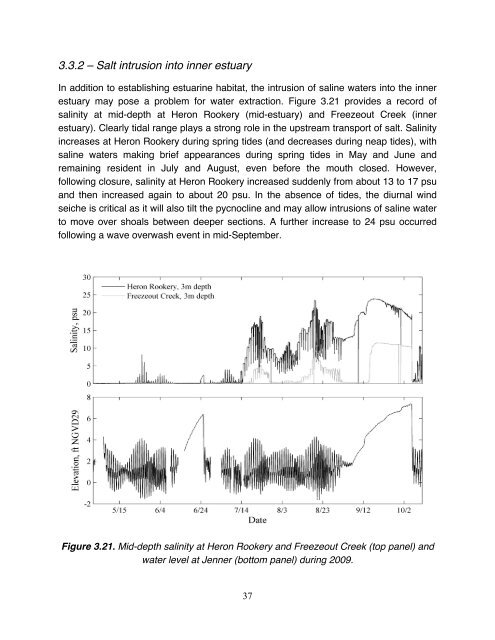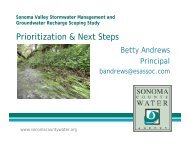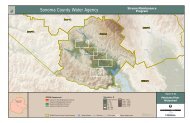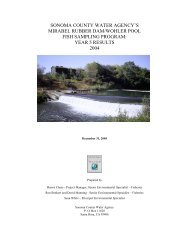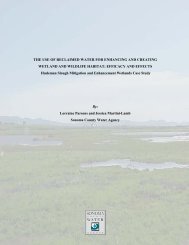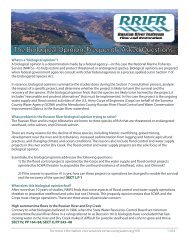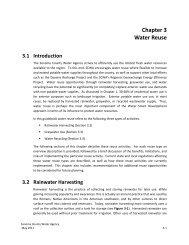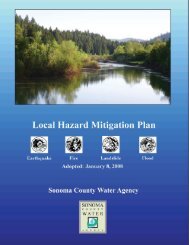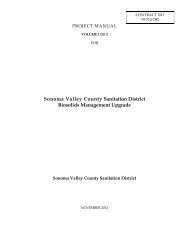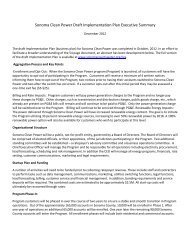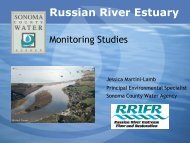Hydrography of the Russian River Estuary - Sonoma County Water ...
Hydrography of the Russian River Estuary - Sonoma County Water ...
Hydrography of the Russian River Estuary - Sonoma County Water ...
Create successful ePaper yourself
Turn your PDF publications into a flip-book with our unique Google optimized e-Paper software.
3.3.2 – Salt intrusion into inner estuary<br />
In addition to establishing estuarine habitat, <strong>the</strong> intrusion <strong>of</strong> saline waters into <strong>the</strong> inner<br />
estuary may pose a problem for water extraction. Figure 3.21 provides a record <strong>of</strong><br />
salinity at mid-depth at Heron Rookery (mid-estuary) and Freezeout Creek (inner<br />
estuary). Clearly tidal range plays a strong role in <strong>the</strong> upstream transport <strong>of</strong> salt. Salinity<br />
increases at Heron Rookery during spring tides (and decreases during neap tides), with<br />
saline waters making brief appearances during spring tides in May and June and<br />
remaining resident in July and August, even before <strong>the</strong> mouth closed. However,<br />
following closure, salinity at Heron Rookery increased suddenly from about 13 to 17 psu<br />
and <strong>the</strong>n increased again to about 20 psu. In <strong>the</strong> absence <strong>of</strong> tides, <strong>the</strong> diurnal wind<br />
seiche is critical as it will also tilt <strong>the</strong> pycnocline and may allow intrusions <strong>of</strong> saline water<br />
to move over shoals between deeper sections. A fur<strong>the</strong>r increase to 24 psu occurred<br />
following a wave overwash event in mid-September.<br />
Figure 3.21. Mid-depth salinity at Heron Rookery and Freezeout Creek (top panel) and<br />
water level at Jenner (bottom panel) during 2009.<br />
37


